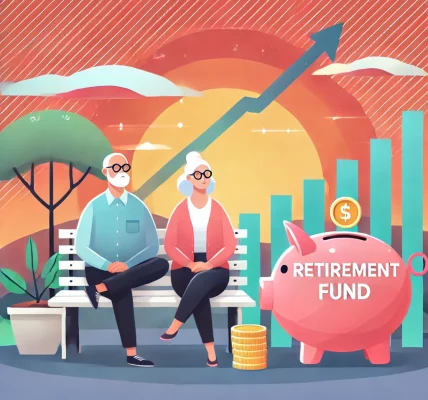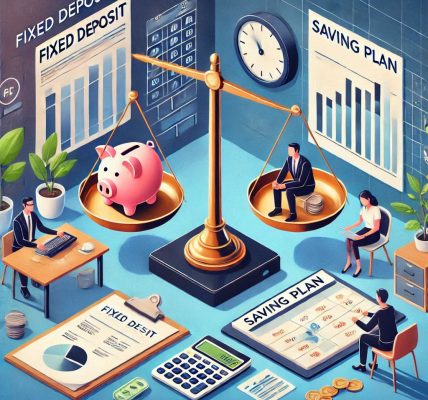Paying off debt is one of the most crucial financial goals for many people. Whether it’s credit card debt, student loans, or a personal loan, debt can be a major source of stress. The good news is, with the right approach, you can use saving plans not only to grow your wealth but also to pay off debt faster.
In this blog, we’ll discuss how you can strategically use saving plans to help reduce your debt burden quickly, while still maintaining a solid financial foundation. From emergency funds to investment accounts, here’s how to use saving plans effectively as a tool in your journey to becoming debt-free.
Why Paying Off Debt Should Be a Priority
Before diving into the details of how saving plans can help, it’s important to understand why paying off debt should be a financial priority. High-interest debts, such as credit card balances, can quickly snowball and become difficult to manage. The longer you take to pay off debt, the more interest you end up paying, which reduces your ability to save and invest.
By focusing on debt repayment, you free up money for future savings, investments, and financial goals. Moreover, paying off debt improves your credit score, reduces your financial stress, and helps you build wealth over time.
How Saving Plans Can Help You Pay Off Debt Faster
Many people believe saving plans are only for accumulating wealth, but they can play a significant role in helping you eliminate debt. Here’s how to use them to your advantage:
1. Build an Emergency Fund First
One of the first steps in using saving plans to pay off debt is building an emergency fund. This is a safety net that prevents you from using credit cards or taking out loans when an unexpected expense arises. Without an emergency fund, any financial setback—such as a medical bill or car repair—might push you further into debt.
You can start by opening a high-yield savings account or investing in liquid mutual funds to ensure you have quick access to your emergency fund. Aim for at least 3-6 months of living expenses. This small step can prevent you from adding more debt while you work towards paying off the existing one.
2. Use a Debt Snowball or Debt Avalanche Approach with Saving Plans
Once you’ve built a solid emergency fund, the next step is to use saving plans to allocate funds for debt repayment. Two popular methods for paying off debt are the debt snowball and debt avalanche methods.
- Debt Snowball: This method involves paying off the smallest debts first. Once the smallest debt is paid off, you move to the next one, and so on. This creates momentum and a psychological win as each debt is eliminated.
- Debt Avalanche: This strategy focuses on paying off the debt with the highest interest rate first, which will save you the most money in interest payments in the long run.
Regardless of the method you choose, set up automatic transfers from your savings plan or investment account to an early debt repayment fund. This ensures consistency and discipline in paying off debt, without having to think about it every month.
3. Use Fixed Deposits for Stable, Low-Risk Growth
If you’re looking for a stable saving option while paying off your debt, consider using Fixed Deposits (FDs). FDs are low-risk and provide guaranteed returns. The money you invest in FDs can help you build wealth over time. Though the returns might not be as high as market-linked plans, the stability they offer can provide peace of mind when managing debt repayment.
You can use the interest earned from FDs to contribute to your debt repayment or use the principal amount to pay off a lump sum of your outstanding debt. This strategy is especially useful when you’re looking for low-risk options for your savings, while focusing on aggressive debt repayment.
4. Invest in Systematic Investment Plans (SIPs) for Higher Returns
For those who are comfortable with a bit more risk, Systematic Investment Plans (SIPs) in equity funds can offer higher returns than traditional saving methods. While SIPs are linked to the market, they provide long-term growth and compounding benefits. You can use the returns from SIPs to pay off high-interest debts like credit cards or personal loans.
It’s important to note that while SIPs can offer great returns, they can also be volatile in the short term. Therefore, SIPs should be used as a complementary strategy alongside your more stable saving plans, especially if you’re targeting long-term debt repayment.
5. Consider Using Tax-Saving Investment Plans
In India, certain saving plans come with tax benefits under Section 80C of the Income Tax Act, such as Public Provident Fund (PPF), National Savings Certificate (NSC), and 5-year tax-saving fixed deposits. You can utilize these plans not only to save taxes but also as a long-term growth tool.
While the primary goal here is to save on taxes, you can also utilize the growth from these tax-saving plans to fund debt repayment over time. This can free up more disposable income for aggressive debt clearing.
6. Automate Your Debt Repayment
Once you’ve set up your saving plans, automate your debt repayment to avoid the temptation of spending the money elsewhere. Set up automatic monthly transfers from your savings account or investment accounts to your debt repayment account.
Automation ensures that you stay consistent in your efforts to pay off debt and helps you stay focused on your financial goals. It also prevents you from using the money meant for debt repayment on other non-essential expenses.
7. Refinance High-Interest Debts Using Your Savings
If you have significant high-interest debt, such as credit cards, consider using the money saved in low-risk saving plans to pay off or refinance those debts. By paying off high-interest loans early, you can save a lot of money in the long run and reallocate those funds into your savings plans to continue growing your wealth.
This strategy works best if you have built up a decent amount of savings and can afford to reduce your outstanding debt significantly. Use this option carefully, as you want to ensure that you still have enough savings to cover unexpected expenses.
Tips to Stay on Track with Your Debt Repayment
- Track your progress: Regularly monitor your debt repayment progress to stay motivated. Use apps or spreadsheets to track the amount of debt you’ve paid off and how much is remaining.
- Review your spending habits: Cut unnecessary expenses and redirect the savings towards debt repayment. Even small changes in your daily spending can have a significant impact on your ability to pay off debt.
- Stay disciplined: It can be tempting to dip into your savings for non-essential purchases, but staying disciplined will help you clear your debt faster and achieve financial freedom.
Conclusion
Using saving plans to pay off debt faster is an effective strategy that combines saving discipline and investment growth. By building an emergency fund, strategically using low-risk and high-return investment options, and automating debt repayment, you can accelerate your journey to becoming debt-free.




